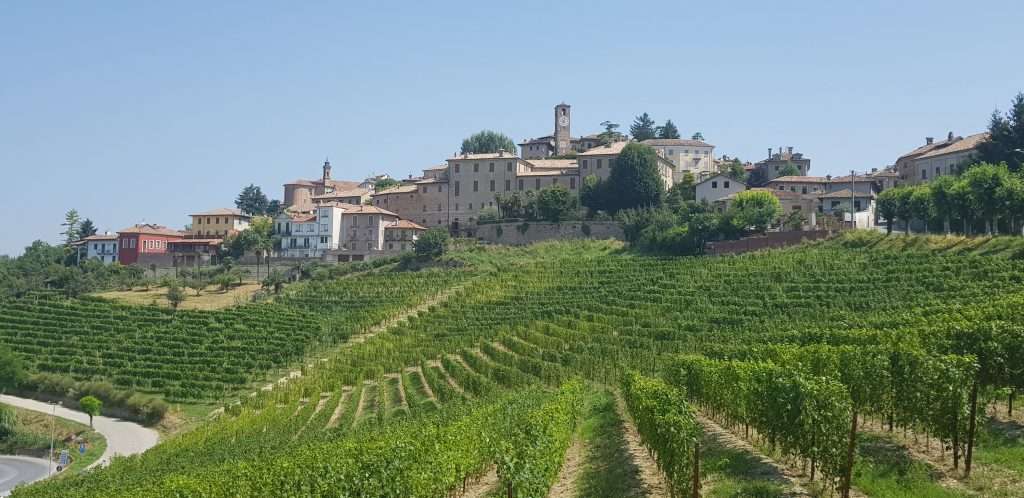At the foot of the mountain
The picturesque region of Piedmont in northwest Italy, bordering France in the west and Switzerland in the north, is one of the richest regions in Italy. The regions capital, Turin, has been home to no less than 37 motor companies, including the sports car brand Abarth and legendary designer Pininfarina.
These days, however, investors are attracted by another of the region’s claims to fame: wine production. Piedmont, which means “at the foot of the mountain” has a hilly landscape beneath the Alps that is ideally suited for wine production. It is home to some of the most famous types of red wine, each named for the local region that produces it. Barolo, Barbaresco, and Nizza are three of the best known.
When demand outgrows supply
So why are investors turning to this area, now? After all, they have been producing wine there since the days of the Roman empires! Oddly enough, the answer can be found in Asia, especially in China.
“Economic growth in China has created a large number of very wealthy entrepreneurs and Business Boosters.
Buying and serving high quality wine is for many of the nouveau riche Chinese a way to both enjoy and show off their newfound wealth.”
Although China, unbeknownst to many outside of Asia, has several excellent wine producers, it is hard to compete with thousands of years of production excellence in the best regions of France and Italy.
Therefore, we have in this decade seen a dramatic price increase in the French regions Burgundy and Bordeaux, as well as Tuscany in Italy. And now investors are pushing up prices in Piedmont as well. Considering there are millions of dollar-millionaires in China, and that only 3% of the roughly 1 million hectoliters of red wine produced in the region comes from Barolo and Barbaresco, it’s no wonder prices are going through the roof, especially for the top brands.
Could I have some Coke with that Barolo?
Wines from Barolo, especially the younger ones, do pose quite a challenge to the Chinese palate. These wines are rich in tannins, and when they are young often very intense and dark. Wine connoisseurs will be shocked to learn that many expensive bottles that have found their way to China have been mixed half-and-half with Coca Cola to better suit the tastes of the buyer.
The taste of the buyer is what the market adjusts to, so investors are now looking at Barbaresco. A single top vintage bottle from the brand Gaja can cost upwards of USD 900 at a Michelin starred restaurant. Savvy investors are likely to look a bit further, to the eastern part of Piedmont, home of the rising star of the region: Nizza. While the powerful Barolo wines are made with the grape variety Nebbiolo, the Nizza is made from Barbera, a grape that produces a sweeter and softer wine. Strict rules limit the production yield in Nizza to only 7 tons per hectare of land, creating wines that at their best have exceptional concentration and complexity.
The challenges of producing liquid art
Unlike assembly line production items, high quality wine has very strong natural limitations on how much production can grow. Take Nizza as an example; the yield restriction is already mentioned, and only the sunniest slopes of the hills will do, so the suitable geographic area is very limited. Taking in to consideration that the vines producing the grapes need at least 5 years after planting before being suitable for wine production, you can see that supply growth is strictly limited for years to come.
Making matters even more interesting is the weather. Being exposed to all kinds of weather is healthy for the vines and the quality of the grapes in the long run, but drought and excessive rain can seriously affect the production. Especially dangerous are hail storms – they have been known to wipe out the entire crop of smaller vineyards. When grapes are finally able to be harvested, it is no wonder that they are treated with utmost care and attention in the production of the wines themselves. Because of these weather variations, the quantity, quality and taste can vary a lot from year to year.
Long term asset play with intermediate benefits
As an investment object, vineyards can be treated as a real estate asset play, riding on macrotrends like the Chinese millionaires increasing appetite for high quality wines. Investors should note, however, that producing some of the finest wines in the world is more of an artform than production. The best winemakers are rock stars in the industry and can command high fees for being credited with a wine.
As always, brand building is essential, and leading brands like Gaja command a hefty premium compared with the hidden gems of similar quality.
For investors wanting to inspect their assets, it must be noted that not many inspections will beat visiting beautiful Piedmont and enjoying its culinary delights. Cheers, or as they say in Italy, salute!

